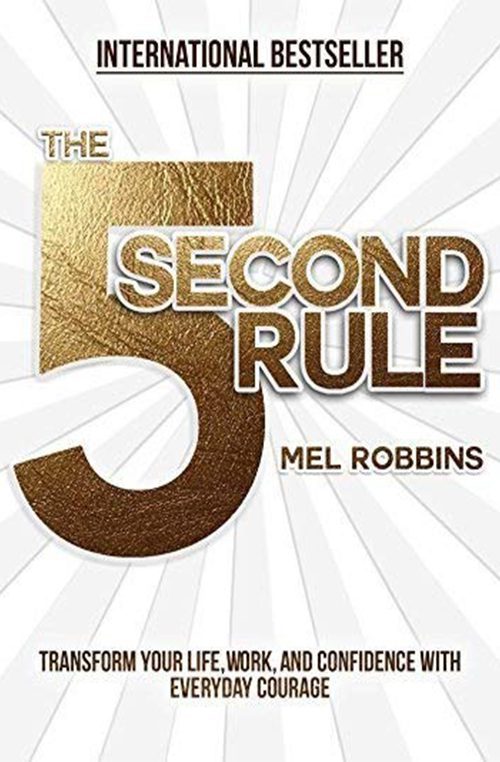Introduction
In this review, we dive into The 5 Second Rule by Mel Robbins, a book that promises to help you overcome procrastination, self-doubt, and fear. With over eight million people worldwide using the 5-second rule, this book has garnered significant attention. But does it live up to the hype? Let’s find out.
What is The 5 Second Rule?
The 5-second rule is a simple yet powerful tool designed to help you take action. The idea is to count backward from five (5-4-3-2-1) and then immediately act on whatever task or decision you’re hesitating on. This technique interrupts your brain’s default patterns of overthinking and procrastination, pushing you toward action. Mel Robbins explains that this rule is backed by science and can be used to build confidence, increase productivity, and conquer anxiety. But how effective is it in real-life scenarios?
Key Takeaways from The 5 Second Rule
1. The Power of Action Over Inaction
One of the core messages of the book is that taking action, no matter how small, can lead to significant changes in your life. By counting backward and acting, you bypass the mental barriers that often hold you back.
2. Overcoming Procrastination
Procrastination is a common struggle for many. The 5-second rule helps you break the cycle of overthinking and hesitation, allowing you to tackle tasks head-on.
3. Building Confidence
By consistently using the rule, you can build confidence in your ability to take action. This can translate into better decision-making and a more proactive approach to life.
4. Managing Anxiety
While the book suggests that the 5-second rule can help with anxiety, it’s important to note that this technique may not be sufficient for severe cases. It can serve as a helpful tool for mild anxiety, but deeper issues may require additional support.
Pros and Cons of The 5 Second Rule
Pros:
- Simple and Easy to Use: The rule is straightforward and can be applied in almost any situation.
- Action-Oriented: It encourages immediate action, which can be beneficial for overcoming procrastination.
- Backed by Science: The technique is supported by psychological principles, making it more credible.
Cons:
- Not a Cure-All: While helpful, the rule may not address deeper issues like trauma or severe anxiety.
- Overhyped Claims: The book’s marketing suggests it can solve a wide range of problems, which may not always be the case.
- Limited Depth: Some readers may find the content repetitive or lacking in depth.
How to Apply The 5 Second Rule in Daily Life
1. Morning Routine
Start your day by using the 5-second rule to get out of bed. Instead of hitting the snooze button, count backward from five and get up immediately. This sets a proactive tone for the rest of the day.
2. Work and Productivity
When faced with a daunting task at work, use the rule to overcome procrastination. Count backward and dive into the task without overthinking.
3. Social Situations
If you’re nervous about speaking up in a meeting or approaching someone new, the 5-second rule can help you take the first step. Count backward and act before your brain talks you out of it.
4. Fitness and Health
Use the rule to stick to your fitness goals. Whether it’s going for a run or choosing a healthy meal, counting backward can help you make better choices.
Criticisms and Limitations
1. Not a Substitute for Therapy
While the 5-second rule can be a helpful tool, it’s not a substitute for professional help. Those dealing with severe anxiety, depression, or trauma should seek guidance from a licensed therapist.
2. Overemphasis on Quick Fixes
The book’s focus on quick action might lead some readers to overlook the importance of long-term strategies and deeper self-reflection.
3. Potential for Misuse
In some cases, the rule might encourage impulsive behavior. It’s important to use it wisely and not as an excuse to avoid thoughtful decision-making.
Real-Life Success Stories
1. Career Advancement
Many readers have reported using the 5-second rule to ask for raises, apply for promotions, or start their own businesses. By taking immediate action, they’ve been able to achieve significant career milestones.
2. Personal Growth
From overcoming social anxiety to building healthier habits, the rule has helped individuals make meaningful changes in their personal lives.
3. Improved Relationships
Some readers have used the rule to improve their relationships by taking the initiative to communicate more openly and resolve conflicts.
Comparing The 5 Second Rule to Other Self-Help Techniques
1. The Pomodoro Technique
While the Pomodoro Technique focuses on time management and breaking tasks into intervals, the 5-second rule is more about overcoming mental barriers to take immediate action. Both can be used together for maximum productivity.
2. Mindfulness and Meditation
Mindfulness encourages being present and aware, while the 5-second rule is about taking action. They serve different purposes but can complement each other in a well-rounded self-help routine.
3. Cognitive Behavioral Therapy (CBT)
CBT involves identifying and changing negative thought patterns, whereas the 5-second rule is a quick tool to interrupt those patterns. CBT offers a more in-depth approach for long-term change.
Final Thoughts
The 5 Second Rule by Mel Robbins offers a simple yet effective technique for taking action and overcoming mental barriers. While it may not live up to all the hype, it’s a practical tool that can help you build confidence and productivity. Use it wisely, and don’t forget to address deeper issues if needed.
